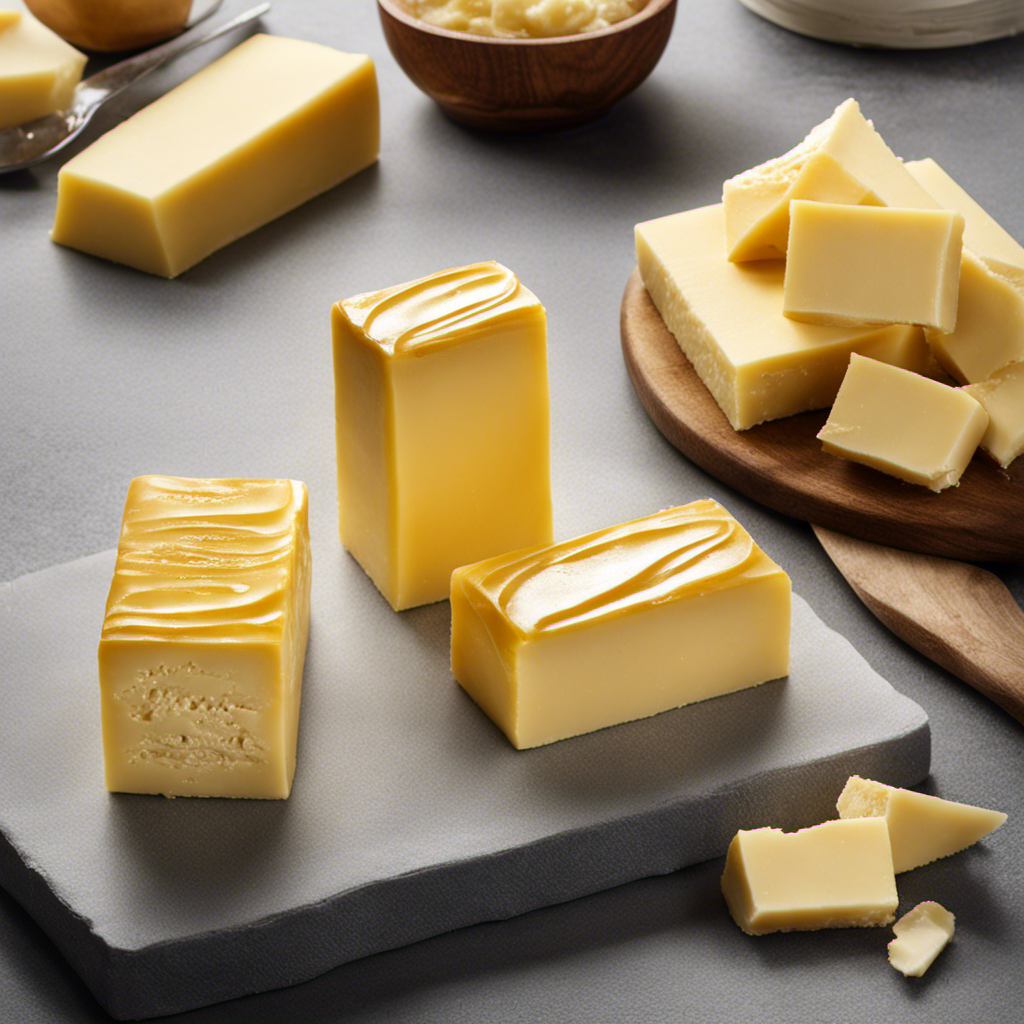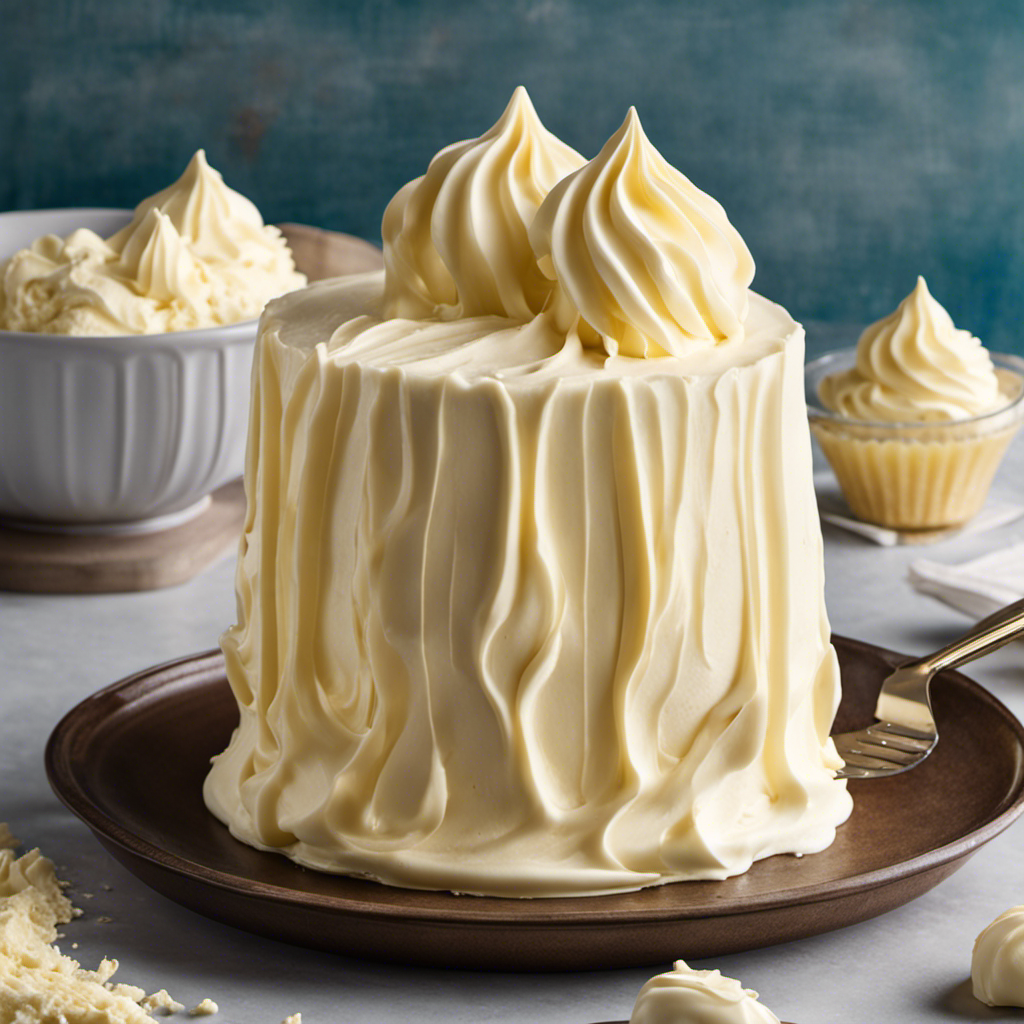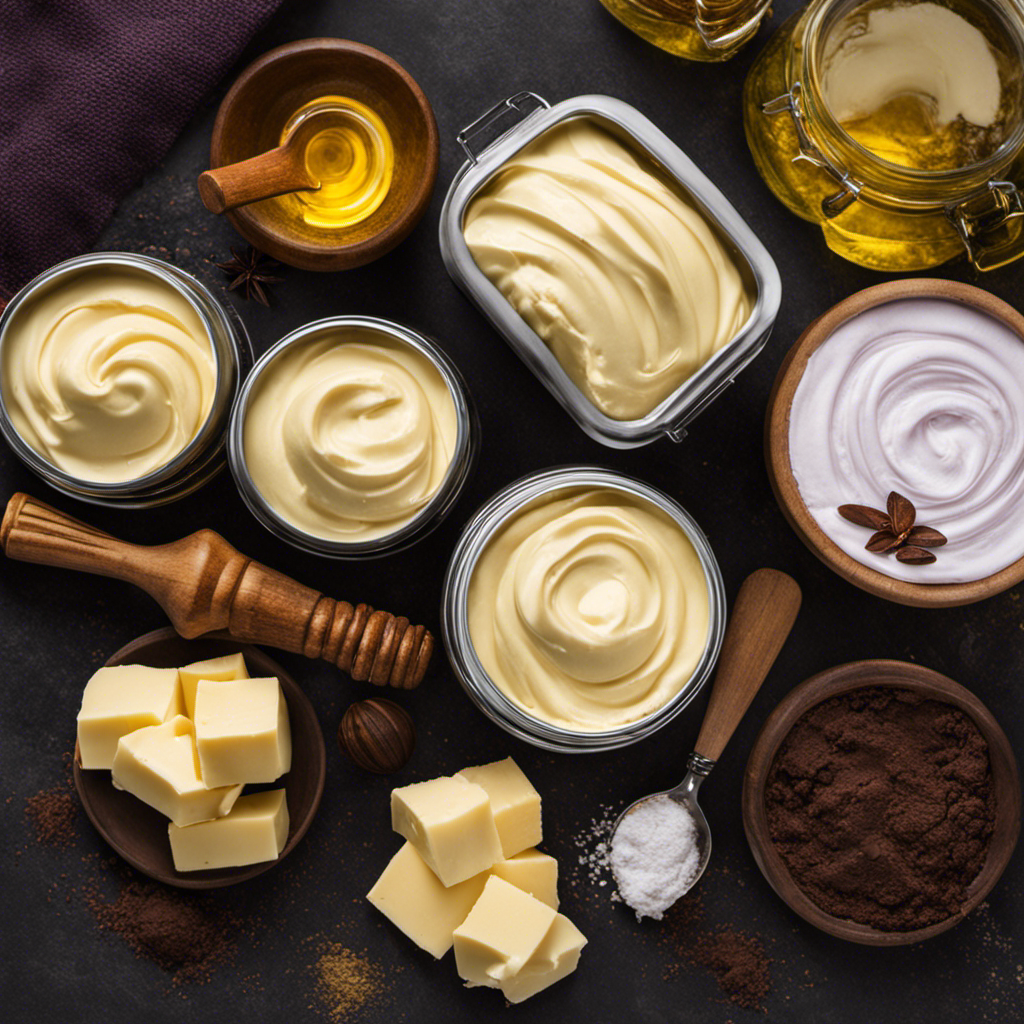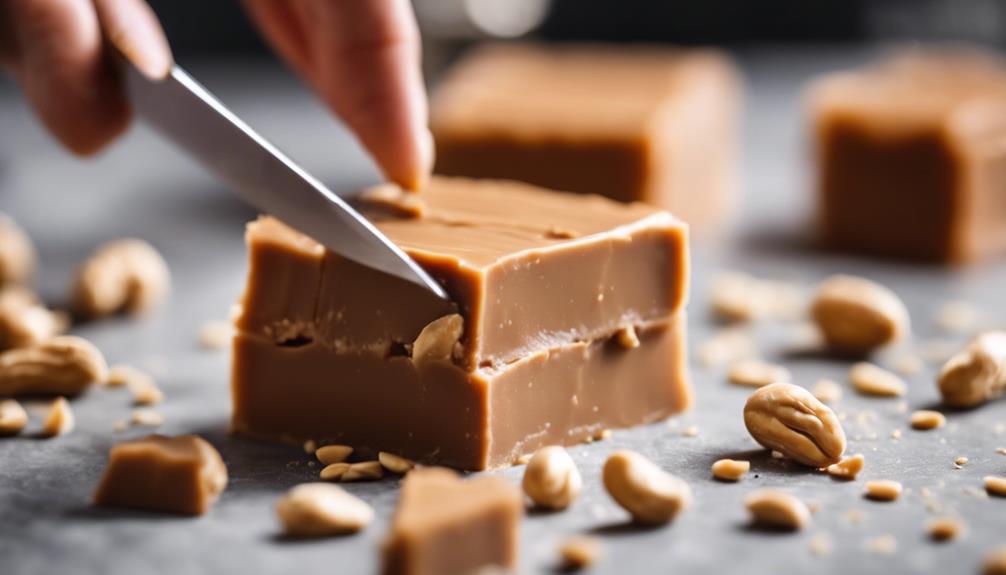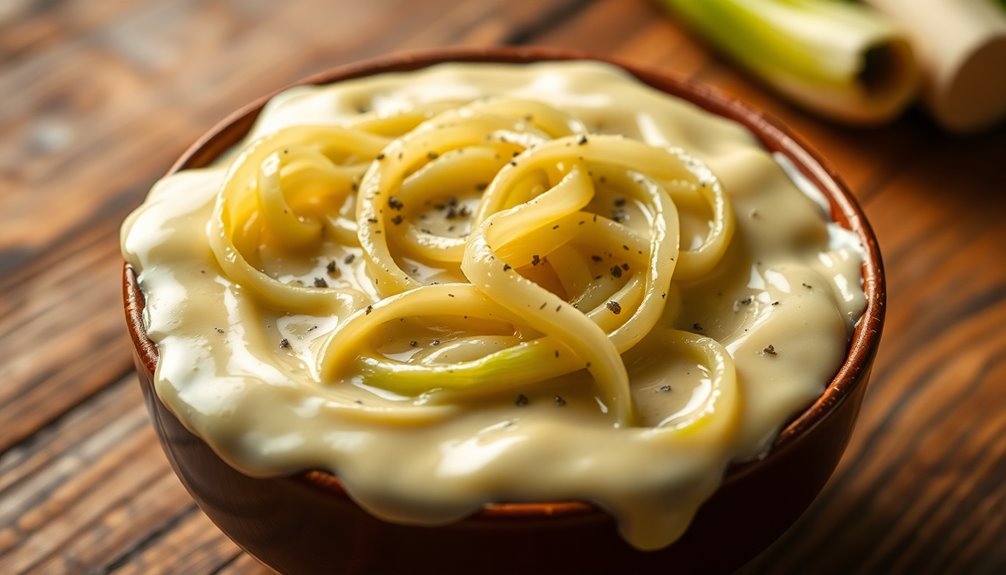I understand your concern about measuring butter, it can be tricky. But do not worry, I am here to help explain it to you. In this article, I will guide you on how to convert from cups to tablespoons and assist you in determining the precise amount of butter required when you have 2/3 cup available.
Accurate measurements are crucial in cooking and baking, so I’ll also share some tips and tricks to ensure your recipes turn out perfectly every time.
Let’s dive in!
Key Takeaways
- 2/3 cup of butter is equivalent to 10 and 2/3 tablespoons.
- Accurate measurements are crucial in cooking and baking.
- Converting cups to tablespoons can be easily done by multiplying the cup measurement by 16.
- Using a kitchen scale and proper measuring tools can help ensure accurate measurements.
Understanding the Conversion
To understand the conversion, you’ll need to know how many tablespoons of butter are in 2/3 cup. Measuring ingredients accurately is essential in cooking and baking. When it comes to common kitchen measurement conversions, it’s important to have a clear understanding of how different units relate to each other.
In this case, 2/3 cup is equivalent to 10 and 2/3 tablespoons of butter. This means that if a recipe calls for 2/3 cup of butter, you would need to measure out 10 and 2/3 tablespoons.
Converting cups to tablespoons can seem daunting at first, but with a little practice and understanding of the conversion factor, you’ll be able to easily adapt recipes to suit your needs.
Converting Cups to Tablespoons
You can easily convert a 2/3 cup measurement to tablespoons. Here’s how:
-
To convert cups to tablespoons, multiply the cup measurement by 16. So, for 2/3 cup, the calculation would be: 2/3 * 16 = 10.67 tablespoons.
-
Keep in mind that tablespoons can also be converted to ounces. There are 0.5 ounces in one tablespoon. So, if you want to convert the 10.67 tablespoons to ounces, the calculation would be: 10.67 * 0.5 = 5.33 ounces.
-
Converting cups to grams is also useful for precise measurements. The conversion factor for cups to grams varies depending on the ingredient. For example, 1 cup of flour is approximately 120 grams, while 1 cup of sugar is approximately 200 grams.
Calculating the Butter Quantity
When baking, it’s important to calculate the amount of butter needed for your recipe. Converting measurements can be tricky, but with the right tools, it becomes a simple task.
To determine the amount of butter, you should know that 1 cup is equal to 16 tablespoons. Therefore, if you have 2/3 cup of butter, you can calculate the amount in tablespoons by multiplying 2/3 by 16. This gives you approximately 10.67 tablespoons of butter.
It’s worth noting that if you don’t have butter on hand, there are common substitutes such as margarine or vegetable oil that can be used. However, the taste and texture of the final product may be slightly different.
Accurate measurements are crucial in baking, as they ensure the perfect balance of ingredients and ultimately the success of your recipe.
The Importance of Accurate Measurements
Accurate measurements are crucial in baking because they ensure the perfect balance of ingredients and ultimately the success of your recipe. Making mistakes in measuring ingredients can have a significant impact on the final results of your baked goods.
Here are three common mistakes to avoid when measuring ingredients:
-
Using the wrong measuring tools: Using the wrong measuring cup or spoon can lead to inaccurate measurements. It is essential to use the appropriate measuring tools for dry and liquid ingredients.
-
Scooping flour directly from the container: Scooping flour directly from the container can result in a packed cup, leading to too much flour in your recipe. Instead, use a spoon to lightly scoop the flour into the measuring cup, then level it off with a straight edge.
-
Estimating quantities: Eyeballing ingredient quantities may seem convenient, but it can throw off the balance of your recipe. It is always best to use precise measurements for consistent results.
These mistakes can have a significant impact on your baking results, resulting in dry, dense, or flat baked goods.
Now let’s move on to some tips and tricks for measuring butter accurately.
Tips and Tricks for Measuring Butter
One helpful tip for measuring butter accurately is to use a kitchen scale. This ensures that you have the exact amount needed for your recipe. However, if you don’t have a kitchen scale, there are alternative methods you can use. One common mistake in butter measurement is using a measuring cup instead of weighing it. This can lead to inaccurate results since the density of butter can vary. Another mistake is not properly softening the butter before measuring it. For precise measurements, it is important to allow the butter to reach room temperature. Another alternative is to use the tablespoon markings on the butter packaging. This can be a quick and convenient way to measure butter, but keep in mind that the markings may not be completely accurate.
| Method | Pros | Cons |
|---|---|---|
| Kitchen Scale | Accurate measurements | Requires additional equipment |
| Measuring Cup | Convenient | Inaccurate results |
| Tablespoon markings on packaging | Quick and easy | May not be completely accurate |
Frequently Asked Questions
Can I Use Margarine or a Butter Substitute Instead of Butter in This Recipe?
Using margarine or a butter substitute in baking recipes has its pros and cons. While it may reduce saturated fat content, it can affect texture and taste. To successfully substitute margarine for butter, ensure the fat content is similar and adjust the recipe accordingly.
How Can I Convert Tablespoons to Grams or Ounces?
To convert tablespoons to milliliters, multiply the number of tablespoons by 14.79. If you don’t have a tablespoon, you can use a kitchen scale to measure butter in grams or ounces.
Is It Necessary to Use Unsalted Butter in Baking Recipes?
Using salted butter in baking recipes can add depth of flavor, but it may also affect the overall saltiness of the dish. Different fats, like margarine or oil, can alter the texture and taste of baked goods.
Are There Any Alternative Measuring Tools I Can Use if I Don’t Have a Tablespoon or Measuring Cup?
When I don’t have measuring tools, I get creative. I’ve used the bottom of a glass as a substitute for a measuring cup, and a spoon as a substitute for a tablespoon. Improvise!
Can I Use a Different Unit of Measurement, Such as Teaspoons, Instead of Tablespoons to Measure Butter?
Yes, you can use teaspoons instead of tablespoons to measure butter. To substitute other fats for butter in a recipe, use a 1:1 ratio. A digital scale can also be used to measure butter accurately.
Conclusion
In conclusion, understanding the conversion between cups and tablespoons is crucial for accurate measurements in cooking.
By converting 2/3 cup to tablespoons, we can determine that there are approximately 10 and 2/3 tablespoons of butter.
Precision in measuring ingredients is vital to achieve desired results in scientific cooking. Just as a scientist carefully measures each component for an experiment, a cook must also ensure precise measurements to create a successful dish.
So, remember to measure with precision and embrace the scientific approach in the kitchen!

